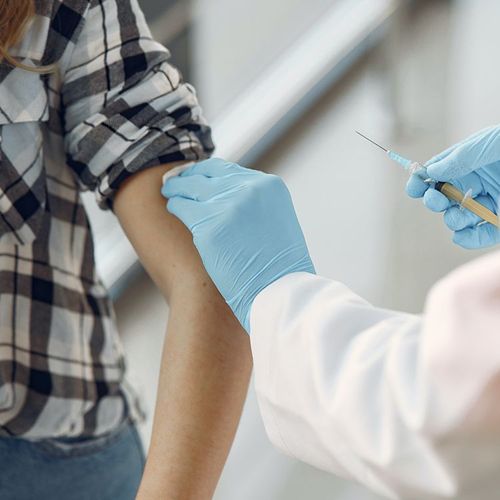A new, more intensive way of delivering allergy shots can dramatically and safely shorten the time it takes for young patients to get relief, a recent study reports.
The Study
Dr. William Smits, an associate professor at Indiana University Medical School and an allergist at the Asthma and Allergy Center in Fort Wayne, and his colleagues treated 148 children between the ages of 1 and 18. Most of the children were between 10 and 12; 88 were male and 60 were female. All had asthma, allergic rhinitis and chronic sinusitis.
They received cortisone and antihistamines for three days prior to an initial two-and-a-half hour session of Rapid Allergen Vaccination (RAV), in which allergy shots are given in increasing doses. Eight patients experienced reactions, such as runny noses, and were treated safely. Every patient who received RAV was discharged after two hours, and none experienced a life-threatening allergic reaction.
Then And Now
Conventional Allergen Vaccination (CAV), or allergy shots, is the standard method of reducing allergy patients' reaction to allergens. By getting shots of the allergen that triggers a reaction in slowly increasing doses, the patients become immune to the allergic effects.
The conventional procedure takes years, Smits says, including an initial eight-month period of weekly shots to slowly allow patients to build up a tolerance to the allergen. Following that, they receive shots once a month for four to five years.
But Smits and his colleagues found that when they "pre-medicated" the young patients with cortisone and antihistamines, and carefully reg. ulated the allergen dose, they could give each child six shots in each arm within a two-and-a-half hour period, increasing their tolerance for the allergen. The researchers compressed the initial phase of inoculations from eight months to two months.
"This is an alternative to the traditional treatment and can be done safely, which is the major concern about RAV," says Smits.
The children experienced relief much faster using RAV than using CAV, and were much more likely to adhere to the vaccine regimen until it was completed several years later, Smits says. Compliance rates after a year, he notes, were nearly 80%, compared with approximately 50% with CAV.
Previous studies of RAV had found the majority of harmful reactions occurred at the end of the initial phase of treatment, when the patient received his/her final high dose, which was maintained for the rest of the therapy. By stopping just before that time, and having patients receive the last shots over a two-month period, there were no life-threatening reactions, Smits says.
Smits has been using RAV with his patients for about five years and treats approximately 75% of them adults and children that way, rather than with conventional immunotherapy. "It costs less, incidents of illness are reduced and people see results more quickly," Smits says.
Wash Away Allergy Symptoms
People who have allergies should take a I shower after spending any time outdoors during pollen season. Pollen can collect on your skin and hair, prolonging your exposure and allergic reaction to it.
Also: Be sure to wash your hair to remove pollen, so it won't fall onto your pillow.
Hay fever symptoms include stuffy nose... sneezing...and itchy eyes.
The hours between mid- and late-afternoon (when pollen levels are lowest) are the best times for outdoor activities
Worst offenders: Trees in the spring and grasses in the summer.
